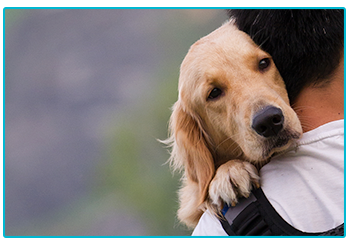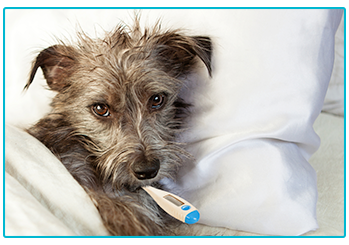We all know just how much dogs love to eat – and often they’ll get their teeth into anything that’s going! Sometimes, however, this can lead them to digesting things that might do them more harm than good. This is certainly the case for xylitol, a sweetener that’s become more common in recent years, and which we have highlighted before as a potential hazard. At The Insurance Emporium, we never want any animal to suffer, which is why we’re sharing these essential facts about xylitol poisoning in dogs.

Where is it found?
The most common item to contain xylitol is sugar-free chewing gum. While xylitol used to be confined mainly to gum, it’s becoming much more popular as a natural sugar substitute. As a result, you’ll now find it in many toothpastes, mouthwashes, prescription, and non-prescription medicines. Some cakes, sweets and chocolates contain the sweetener, as well as certain brands of peanut butter.
Why is it harmful for dogs?
Whilst perfectly safe for humans, if a dog eats xylitol, the sugar-replacement can confuse the pancreas, which will then release extra insulin. The insulin can then go on to remove real sugars from a canine’s blood, leading to hypoglycaemia, potentially resulting in liver damage.
What are the symptoms?
Even a small amount of xylitol can be dangerous, and the symptoms of poisoning should begin to appear within half an hour of consumption. They might include; vomiting, tiredness, difficulty walking, collapse, disorientation, seizures and, in the very worst case, coma.

What should you do?
If you notice your four-legged friend has eaten xylitol, or is displaying any of the above symptoms, be sure to contact your vet immediately! A drop in the blood sugar of your dog could be corrected fairly easily. However, if it’s ignored, further complications can be the result – leading to more serious problems.
What are the treatments?
This will usually depend on how quickly the problem was reported. If noticed early enough, induced vomiting might be able to purge the xylitol. If not, the vet may have to put your dog on an intravenous sugar drip, whilst monitoring their blood sugar levels. If the liver has become damaged, more specialist life-saving procedures could be required.
What amount of xylitol is dangerous?
This is something that will vary from dog to dog; and different products will contain varying levels of the sweetener. The size of your canine friend can often be a deciding factor, with larger dogs often needing to consume more for the poison to take effect. No matter how large or small the dog, or how much xylitol they’ve eaten, it’s always best to get in touch with your vet.

What can be done to protect your dog?
The simplest way to keep your dog from eating xylitol could be to check the labels on your food packaging, and storing anything containing the sweetener out of reach. Make sure that if you carry chewing gum in your bag or pockets, your pooch’s snout is kept well away!
Our four-legged companions really are part of the family, therefore we all want to do the most we can to keep them from harm. If you’re a dog owner, we hope you’ll never need our advice, but in the event you do, it may be of use. As a proud pet parent, have you considered taking out dog insurance to cover your dog against unexpected illness? The Insurance Emporium offer five different Dog Insurance policies, with Vet’s Fees cover up to £8,000* as a Standard Benefit. You could also get up to 30% off^ when taking out a policy. Head to The Insurance Emporium to find out more!
* Cover for Vet’s Fees up to £8,000 is available on Gold Lifetime lunar monthly policies only.
^ The 30% discount is made up of 20% Introductory Discount plus 10% Multi-pet Discount (if appropriate). The Introductory Discount is available for the first 12 premium payments on lunar and calendar monthly policies or one premium payment on annual policies.
All content provided on this blog is for informational purposes only. We make no representations as to the accuracy or completeness of any information on this site or found by following any link on this site. We will not be liable for any errors or omissions in this information nor for the availability of this information. We will not be liable for any loss, injury or damage arising from the display or use of this information. This policy is subject to change at any time.


